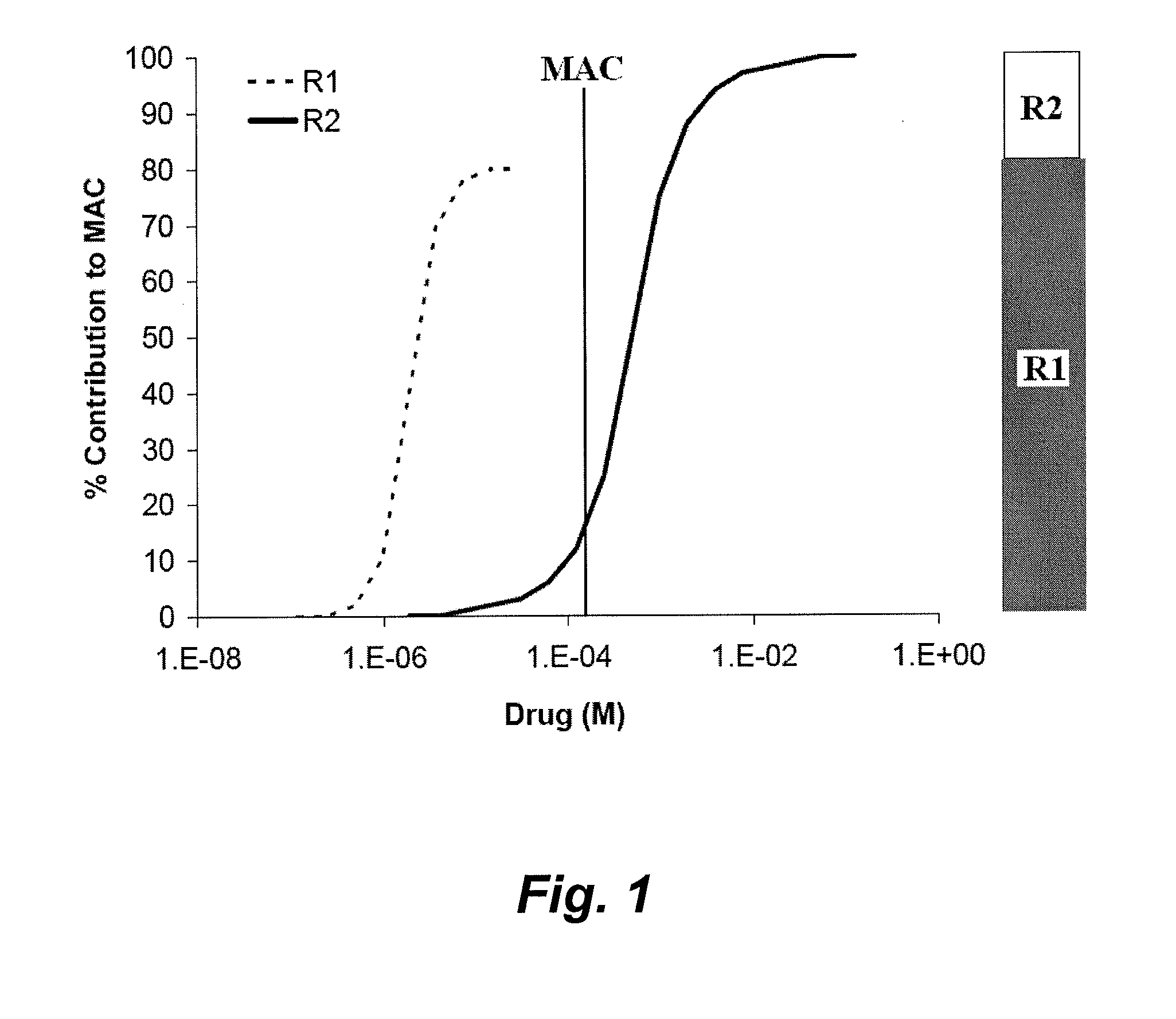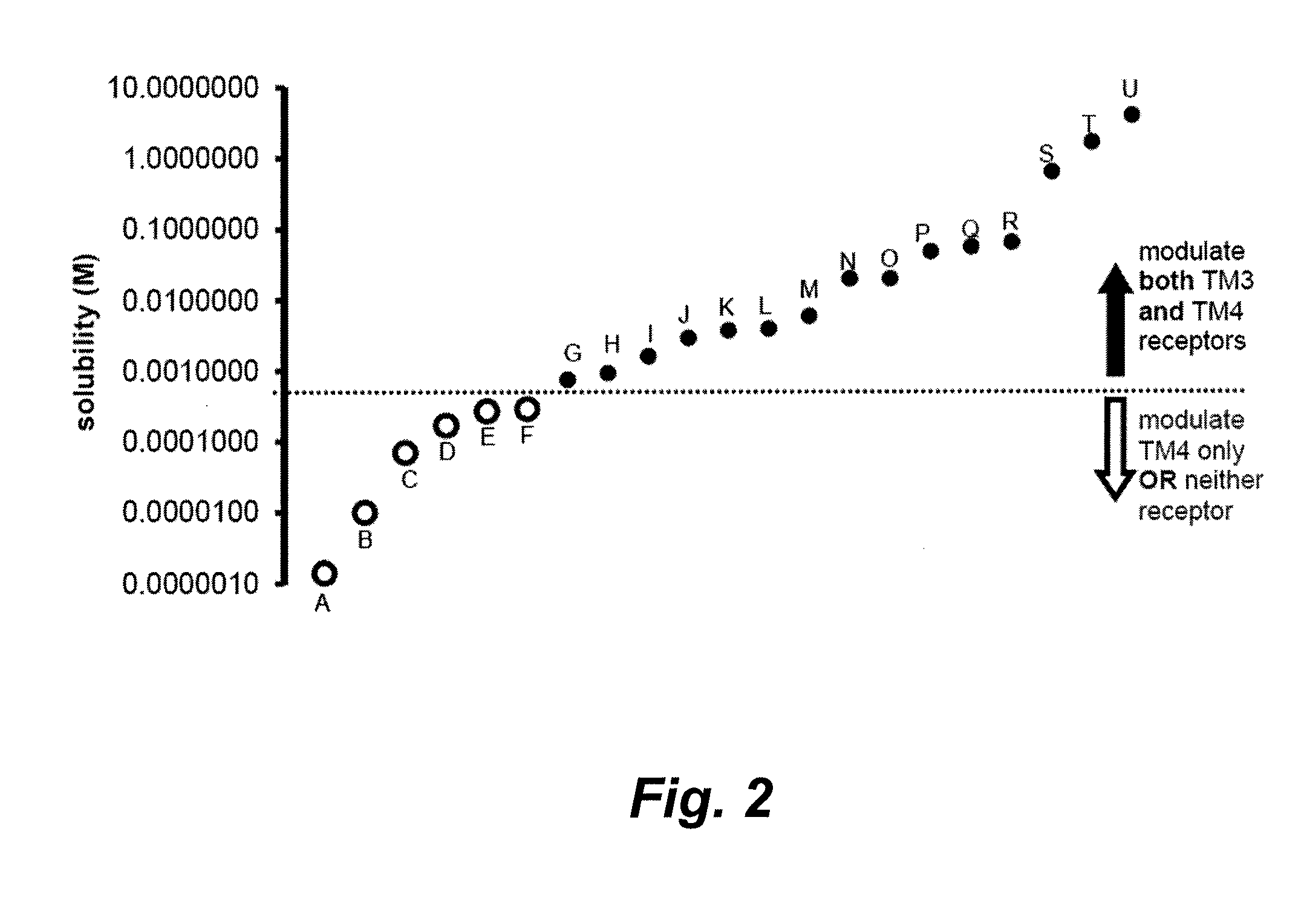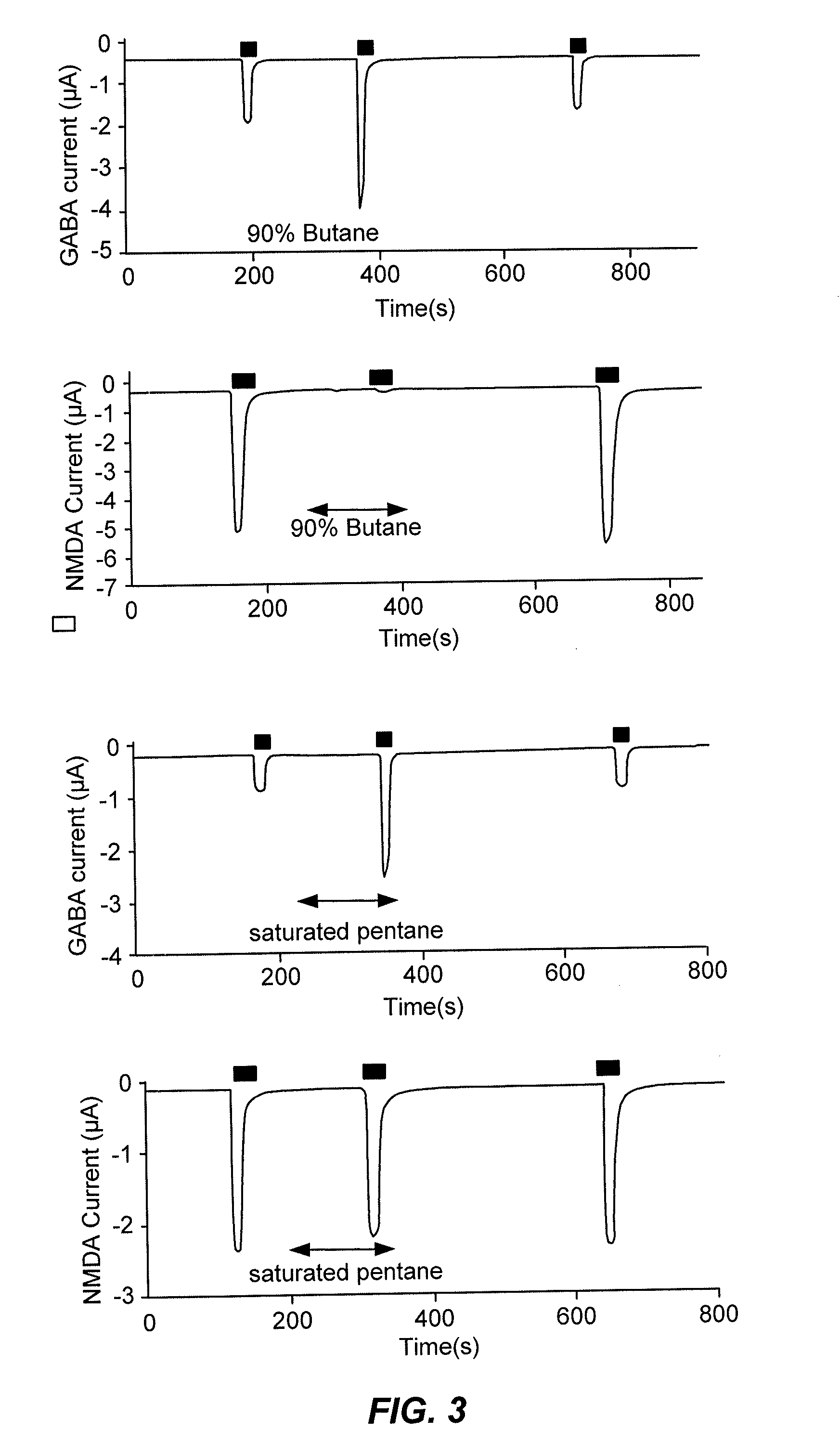Methods of inducing sedation
- Summary
- Abstract
- Description
- Claims
- Application Information
AI Technical Summary
Benefits of technology
Problems solved by technology
Method used
Image
Examples
example 1
[0486]Hydrocarbon Molar Water Solubility Predicts NMDA vs. GABAA Receptor Modulation
[0487]Background: Many anesthetics modulate 3-transmembrane (such as NMDA) and 4-transmembrane (such as GABAA) receptors. Clinical and experimental anesthetics exhibiting receptor family specificity often have low water solubility. We determined that the molar water solubility of a hydrocarbon could be used to predict receptor modulation in vitro.
[0488]Methods: GABAA (α1β2γ2s) or NMDA (NR1 / NR2A) receptors were expressed in oocytes and studied using standard two-electrode voltage clamp techniques. Hydrocarbons from 14 different organic functional groups were studied at saturated concentrations, and compounds within each group differed only by the carbon number at the co-position or within a saturated ring. An effect on GABAA or NMDA receptors was defined as a 10% or greater reversible current change from baseline that was statistically different from zero.
[0489]Results: Hydrocarbon moieties potentiate...
example 2
1,1,2,2,3,3,4-heptafluorocyclopentane (CAS #15290-77-4) Induces Anesthesia
[0513]All known inhalation anesthetics modulate multiple unrelated anesthetic receptors, such as transmembrane-3 (TM3) receptors, transmembrane-4 (TM4) receptors, or both TM3 and TM4 receptors. We tested a series of homologous n-alcohols, n-alkanes, n-alkenes, n-alkynes, n-aldehydes, primary amines, 1-alkylfluorides, dialkyl ethers, alkyl benzenes, esters, haloalkanes, ketones, sulfides, and thiols that differed only by 1 or 2 carbon chain lengths. We studied the effects of these drugs on NMDA receptors (a member of the TM3 superfamily) and GABAA receptors (a member of the TM4 superfamily) at saturating drug concentrations in an oocyte two-electrode voltage clamp model. For GABAA versus NMDA receptors, we found that there is no correlation between specificity and vapor pressure, carbon chain length, or molecular volume. However, there exists a water solubility-specificity cut-off value equal to about 1.1 mM wi...
example 3
1,1,2,2,3,3,4,5-octafluorocyclopentane (CAS #828-35-3) Induces Anesthesia
[0517]1,1,2,2,3,3,4,5-octafluorocyclopentane (CAS #828-35-3) caused a loss of righting reflex in 4 healthy Sprague-Dawley rats at a concentration of 3.3±0.4 (mean±SD) percent of 1 atmosphere. This agent has a faint but pleasant odor and induced anesthesia very rapidly without excitement or coughing. After discontinuing the agent, rats were awake and ambulatory in less than 1 minute. As predicted by its water solubility, 1,1,2,2,3,3,4,5-octafluorocyclopentane potentiates GABAA, glycine, and some inhibitory potassium channels in vitro, but has no effect on NMDA receptors up to a saturating aqueous concentration. Despite a lack of NMDA receptor effects, 1,1,2,2,3,3,4,5-octafluorocyclopentane is able to produce the desired pharmacologic endpoints of unconsciousness and immobility that appears similar to desirable effects produced by conventional agents.
PUM
 Login to View More
Login to View More Abstract
Description
Claims
Application Information
 Login to View More
Login to View More - R&D
- Intellectual Property
- Life Sciences
- Materials
- Tech Scout
- Unparalleled Data Quality
- Higher Quality Content
- 60% Fewer Hallucinations
Browse by: Latest US Patents, China's latest patents, Technical Efficacy Thesaurus, Application Domain, Technology Topic, Popular Technical Reports.
© 2025 PatSnap. All rights reserved.Legal|Privacy policy|Modern Slavery Act Transparency Statement|Sitemap|About US| Contact US: help@patsnap.com



